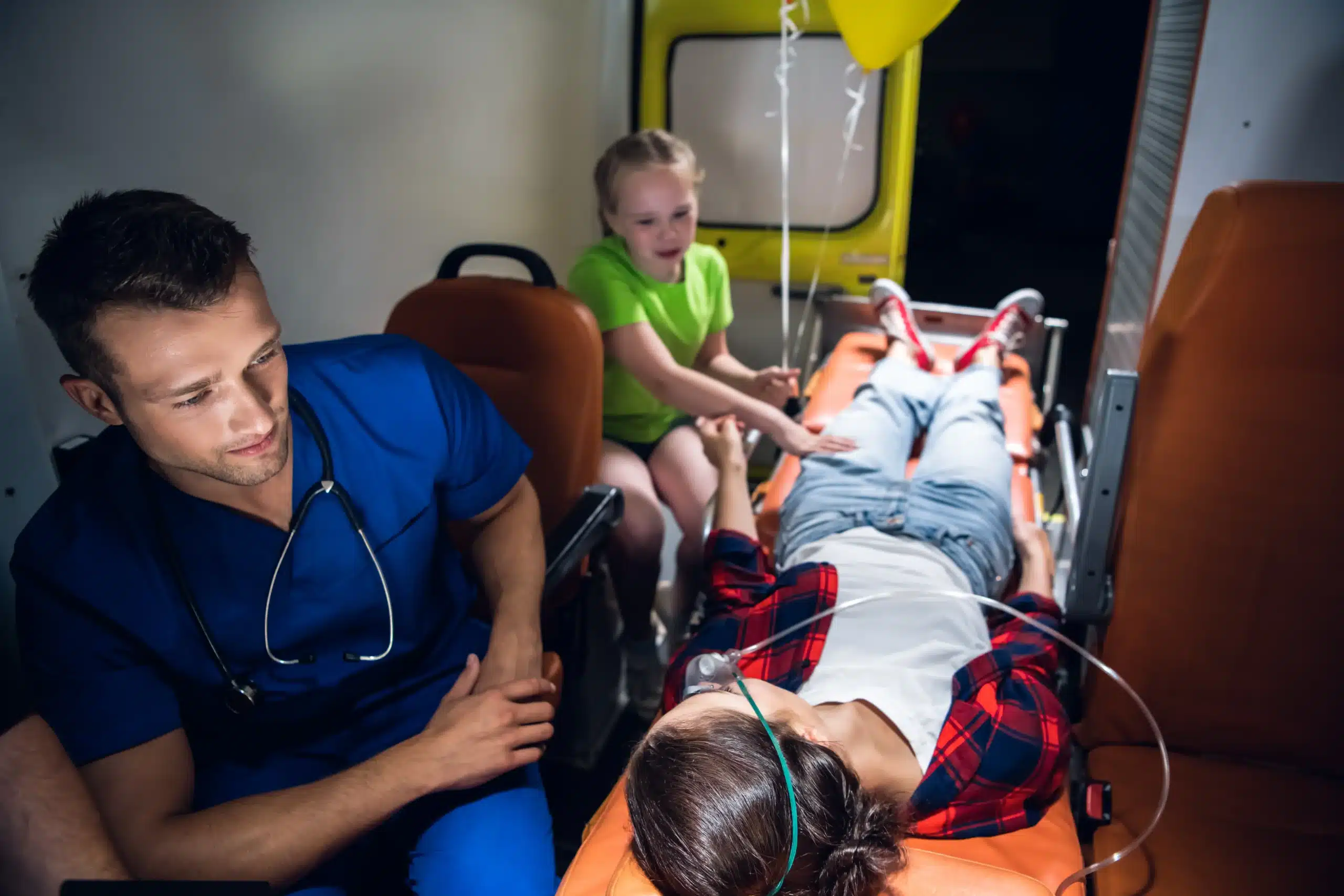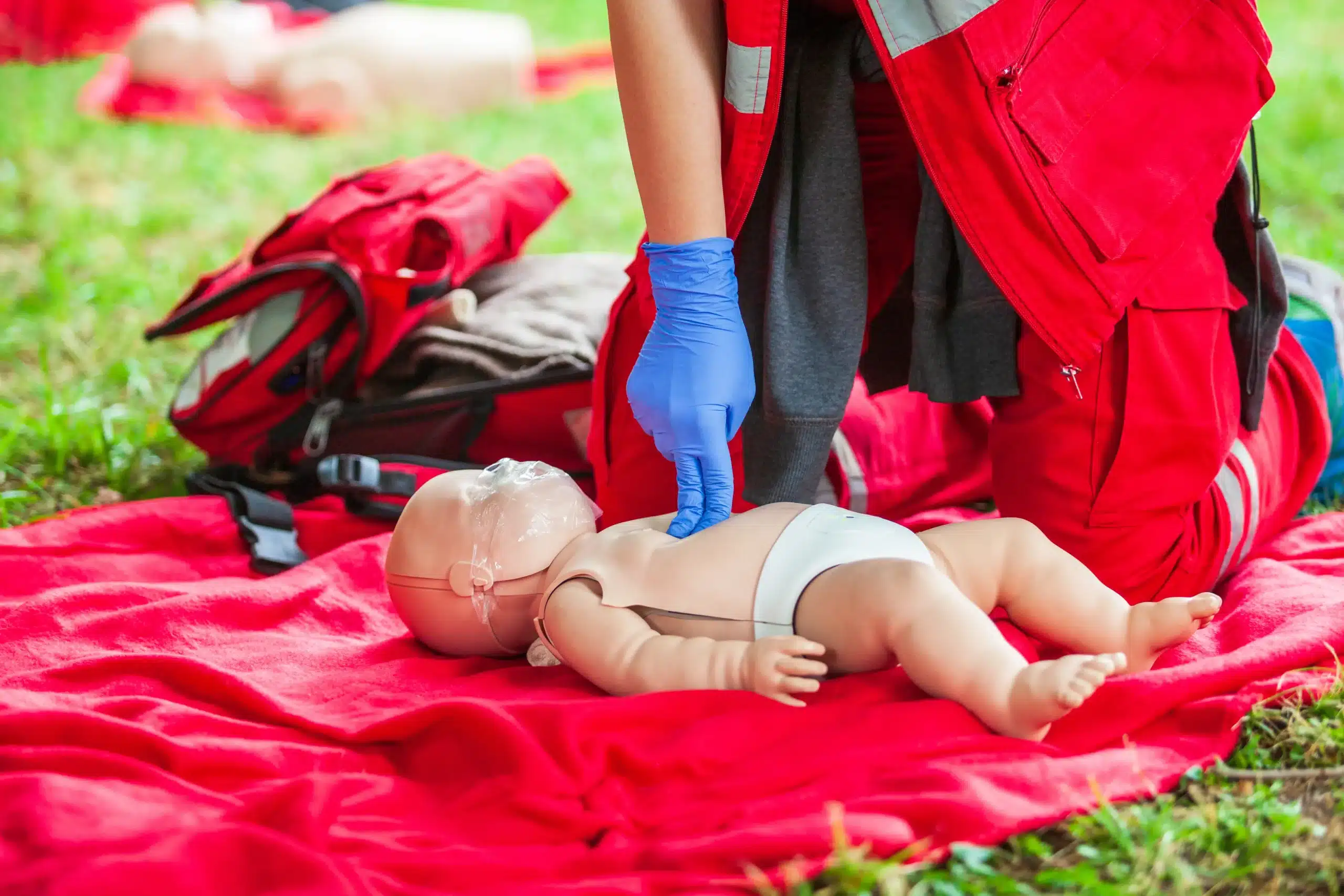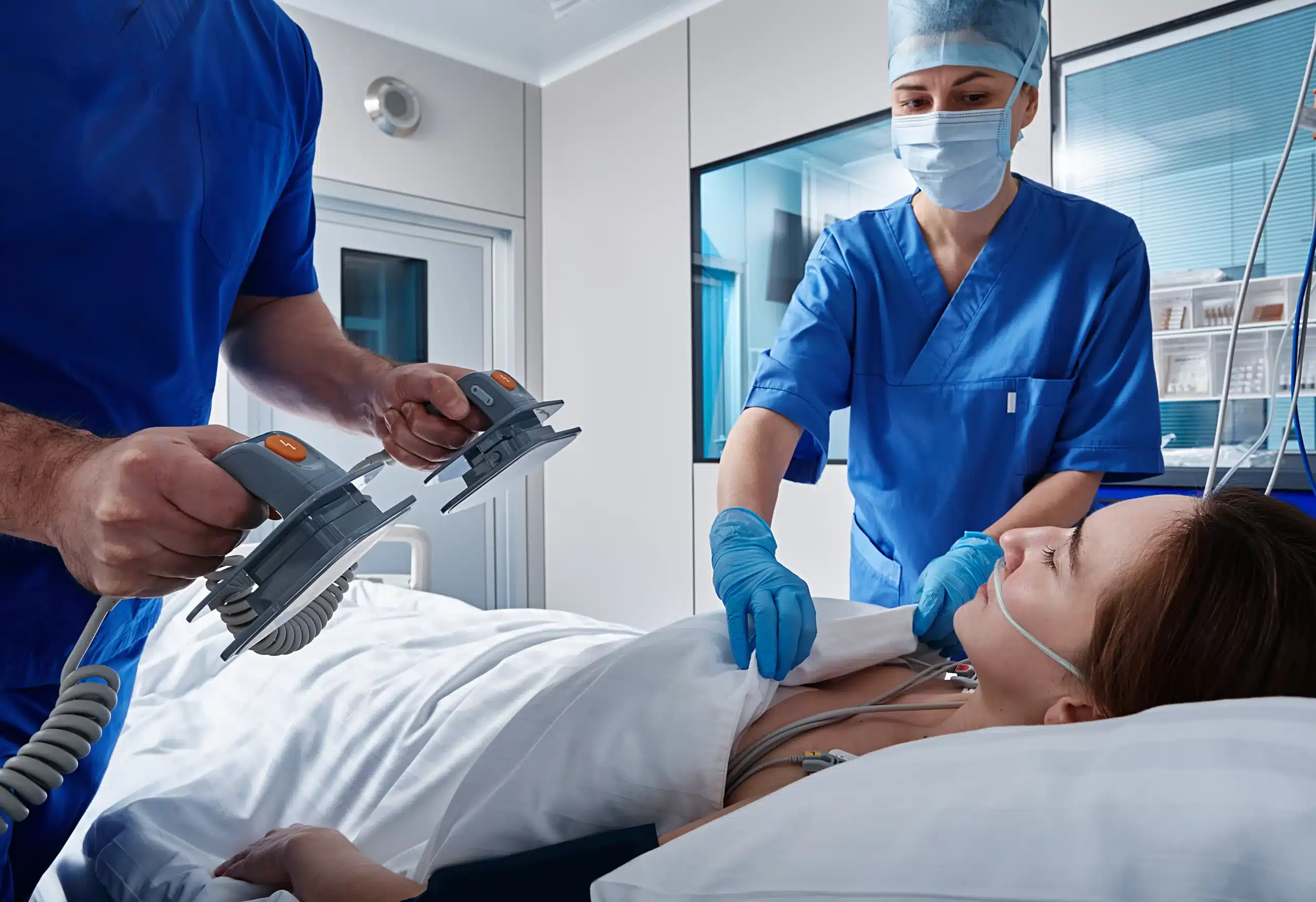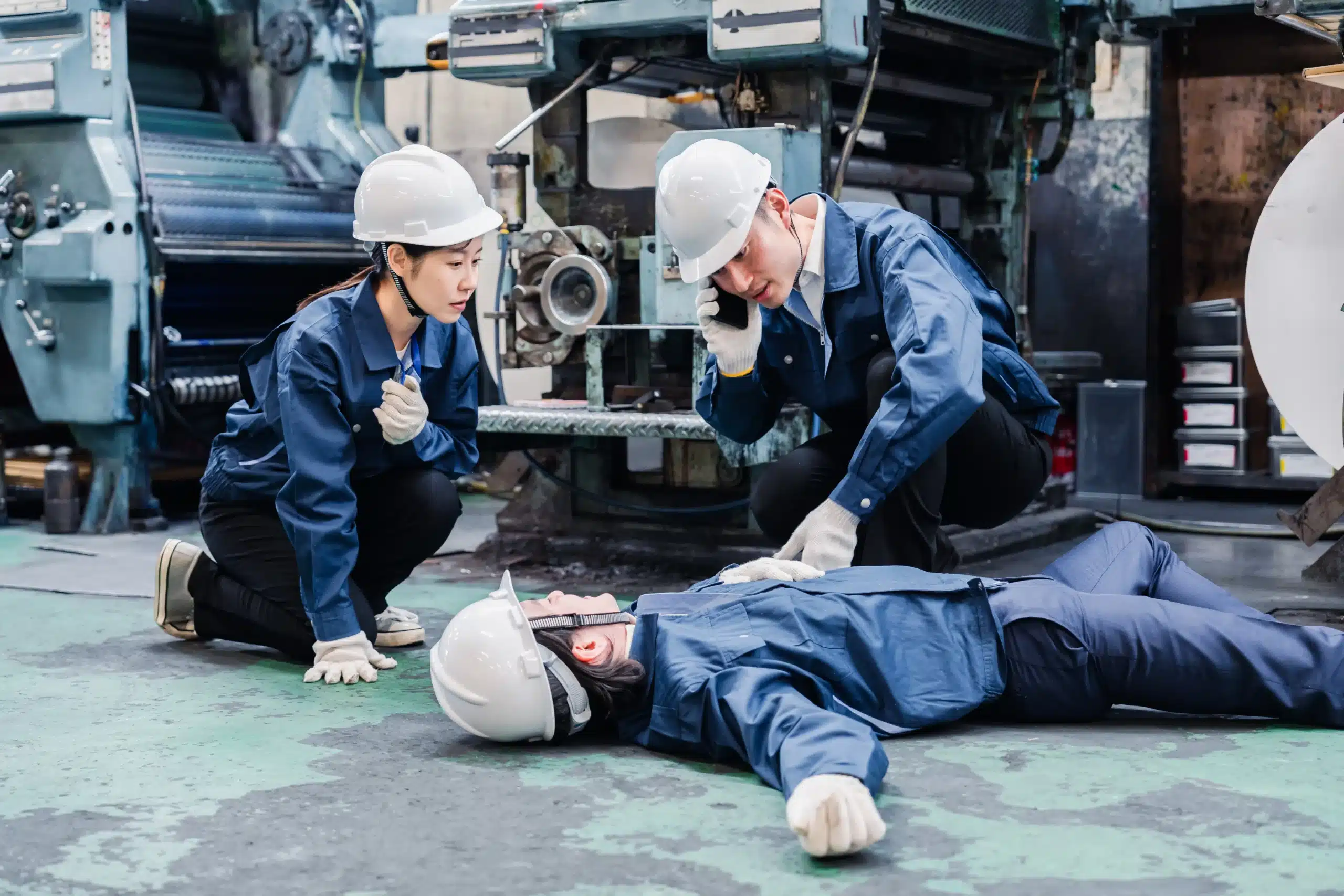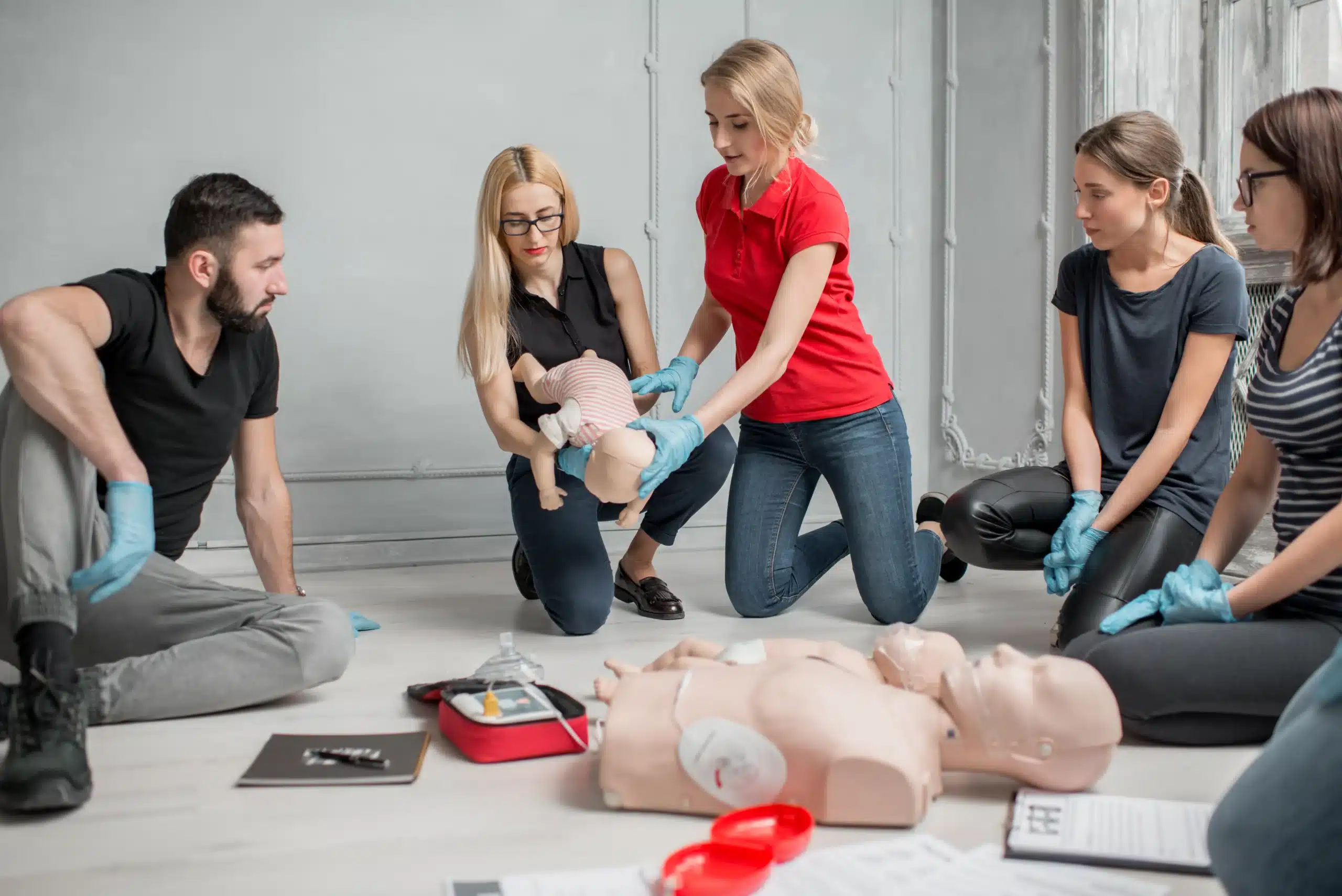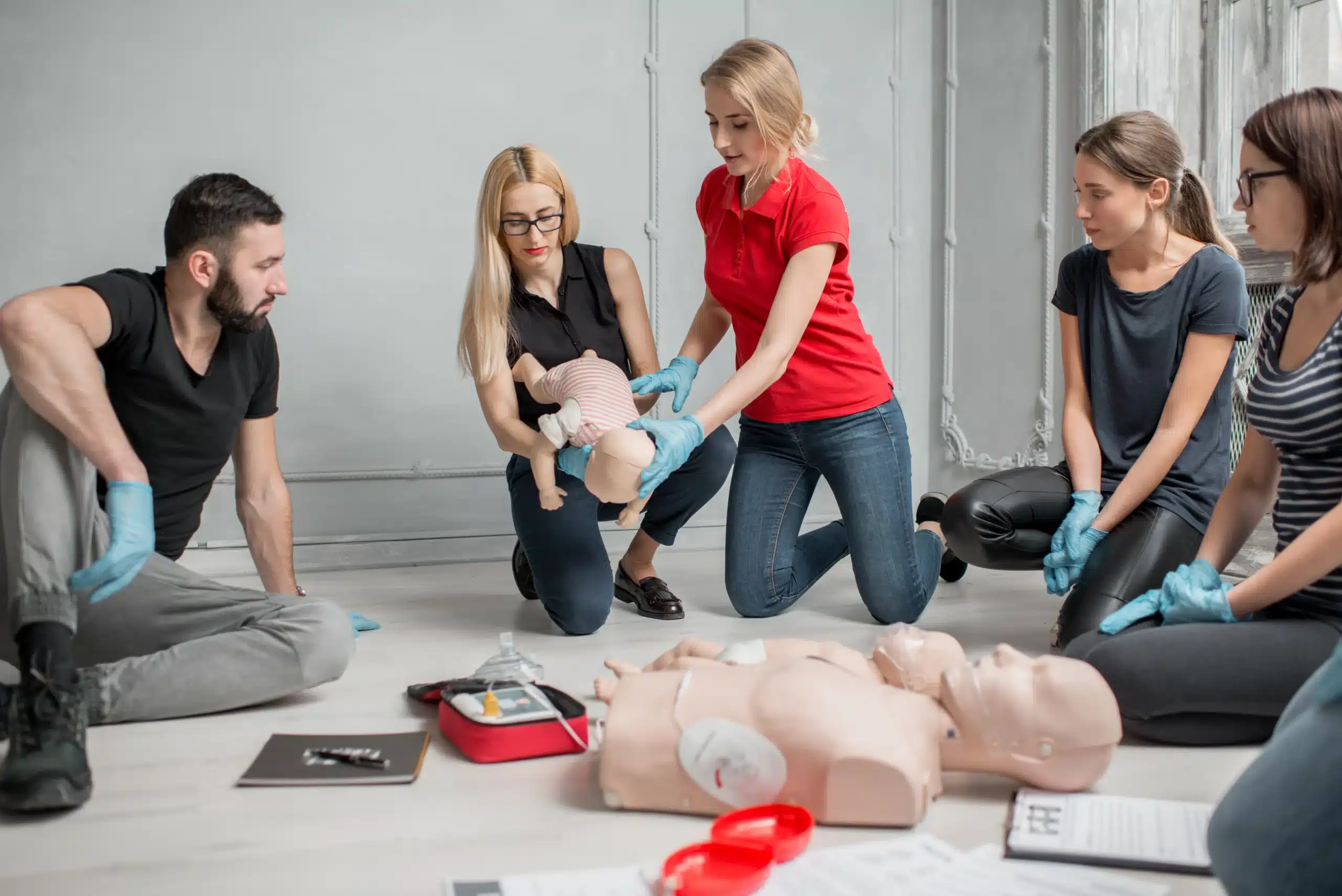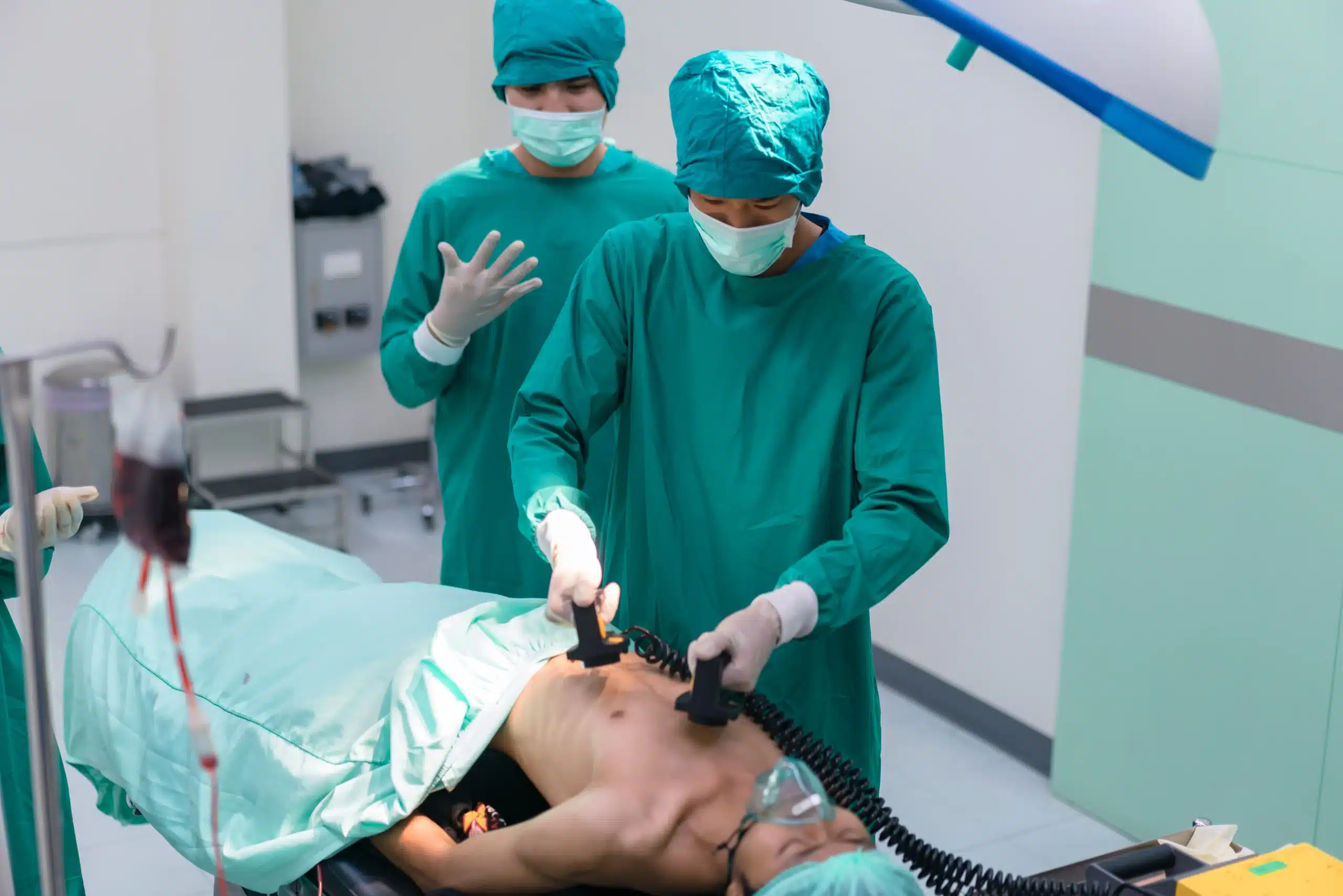Are you ready to respond effectively in a medical emergency? BLS certification in San Jose provides the training you need to confidently provide critical care. This comprehensive certification covers essential life-saving techniques, including CPR, AED operation, and airway management for adults, children, and infants. This article will explore the various aspects of BLS certification, from its core components to the different course formats available in San Jose. Whether you’re a healthcare professional, a first responder, or someone who wants to be prepared for any situation, this guide will help you understand the value of BLS and how to get certified.
Key Takeaways
- BLS certification equips you to handle medical emergencies. Whether you’re a healthcare professional or not, this training provides essential life-saving skills applicable in various situations.
- Choosing the right BLS course involves assessing key factors. Consider accreditation, instructor experience, course content, and scheduling flexibility to find a program that meets your specific needs and learning preferences.
- Stay current with your BLS skills. Remember that certification typically expires after two years. Renewing ensures you remain proficient in the latest life-saving techniques and guidelines.
What is BLS Certification?
BLS stands for Basic Life Support. It’s a critical healthcare certification that teaches people how to respond to life-threatening emergencies. It goes beyond basic CPR training, which focuses primarily on cardiopulmonary resuscitation, by adding skills like using an automated external defibrillator (AED) and relieving airway obstructions for victims of all ages. BLS certification is designed for healthcare providers, first responders (like paramedics, firefighters, and police officers), and other professionals who may need to provide care in emergencies. The Red Cross website offers a helpful comparison of BLS and CPR certifications.
Key BLS Training Components
BLS training typically includes high-quality CPR for adults, children, and infants, plus AED instruction. It also emphasizes teamwork and clear communication in emergencies. Students learn to quickly assess a patient, provide rescue breaths, and perform chest compressions. Airway management techniques, like opening a patient’s airway and providing ventilation, are also key. Our guide to BLS and ACLS courses in San Jose offers more detail on BLS training components.
Why BLS Matters for Healthcare Professionals and Laypersons
BLS certification is essential for healthcare professionals because it directly affects patient outcomes. In time-sensitive emergencies, having the skills to provide immediate care can significantly improve a patient’s survival rate. Research indicates that healthcare providers with current BLS training are better prepared to manage emergencies and improve patient outcomes. BLS training is valuable for anyone, not just healthcare professionals. Knowing how to respond to a medical emergency can empower you to help loved ones or even strangers. BLS training builds confidence and teaches the skills to act quickly and effectively in a crisis, potentially saving a life.
Top BLS Certification Providers in San Jose
Finding the right BLS certification course can feel overwhelming, but several respected organizations offer training in San Jose. Here’s a rundown of some popular options:
American Heart Association (AHA)
The American Heart Association offers BLS provider courses in San Jose. These courses provide same-day AHA BLS certification, valid for two years. The AHA focuses on high-quality CPR training and is a recognized leader in resuscitation science. Check their website for the latest course schedules and pricing.
American Red Cross
The American Red Cross also provides BLS certification and renewal courses in San Jose. They offer training for healthcare providers and instructors, using real-life scenarios to teach CPR, AED use, and how to assist someone struggling to breathe. Visit their website for details on course availability and registration.
Milpitas CPR Classes
Milpitas CPR Classes offers convenient in-person BLS training in the San Jose area. They cover essential life-saving skills, including CPR, AED operation, and airway management techniques for adults, children, and infants. Their website has more information about their BLS courses, including AHA certifications.
CPR Training Center
The CPR Training Center in San Jose offers a range of American Heart Association (AHA) certified courses, including BLS. They also provide training in First Aid, ACLS, and PALS. Explore their course catalog and schedule on their website.
Stanford Health Care
While Stanford Health Care is a prominent healthcare provider, details about their specific BLS certification offerings in San Jose can be tricky to find. Contact them directly or check their website for the most up-to-date information on BLS training.
Course Formats, Duration, and Costs
Finding the right BLS certification course often involves balancing flexibility with your learning style and budget. Let’s break down the different formats, what to expect time-wise, and typical costs.
In-Person, Online, and Blended Learning
BLS certification courses are typically offered in three formats: in-person, online, and blended learning. In-person classes provide hands-on training and direct interaction with instructors. Organizations like the American Red Cross and the American Heart Association offer in-person BLS training in San Jose. Online courses offer flexibility for those with busy schedules, allowing you to learn the material at your own pace. Blended learning combines online coursework with an in-person skills session for practical application. The AHA provides blended learning for BLS in San Jose. Consider which format best suits your learning preferences and availability.
Course Length and Time Commitment
The time commitment for BLS certification varies depending on the format and provider. Standard in-person BLS courses can often be completed in approximately 4.5 hours. Blended learning options may require less in-person time, as some of the coursework is done online. Factor in travel time for in-person classes. Online courses offer more flexibility, but self-discipline is key to completing the material efficiently.
Average Prices and Discounts
BLS certification typically costs around $70, although prices can vary. Some providers, like CPR Training Center, may offer discounts for group registrations. Check with specific training centers for pricing and any available discounts. Consider the cost of certification an investment in your skills and ability to respond effectively in emergencies.
Certification Validity and Renewal
BLS certifications are generally valid for two years. Renewal courses are available to keep your skills current and maintain your certification. Both the American Red Cross and the American Heart Association offer BLS renewal, so you can easily recertify when the time comes. Mark your calendar to remind yourself when your certification needs to be renewed.
BLS vs. Other CPR Certifications: Key Differences
BLS Compared to Basic CPR
BLS (Basic Life Support), designed for healthcare providers like doctors and nurses, and first responders, covers a broader range of skills than standard CPR. Think of BLS as the next level up. It includes training on using an AED, clearing obstructed airways, and other essential techniques for managing cardiac arrest and respiratory distress. Basic CPR, on the other hand, focuses primarily on chest compressions and rescue breaths—the very fundamentals of life support. It’s often geared towards the general public, equipping anyone with the skills to respond to a basic life-threatening situation. For more information, check out the American Red Cross page on BLS and CPR training.
Advanced BLS Techniques
BLS certification provides a strong foundation in life support, including how to use an Automated External Defibrillator (AED) and how to help someone who is choking. These are absolutely critical skills in many emergency situations. You can find more information on our BLS certification page. However, there are more advanced certifications available, such as Advanced Cardiac Life Support (ACLS), which offer more specialized training for healthcare professionals dealing with complex cardiac emergencies. Our guide on BLS and ACLS courses in San Jose offers a deeper look at these advanced techniques.
Who Needs BLS?
BLS certification is a must-have for anyone working in healthcare or as a first responder. It’s not just a box to check off—it’s a vital skill set that can truly make a difference in life-or-death situations. Think EMTs, paramedics, nurses, doctors, physician assistants, dentists, and other healthcare professionals. Regularly refreshing these skills is also crucial. Many healthcare providers mistakenly believe that BLS certification is a one-time thing, but ongoing training is essential to stay sharp and confident in your abilities. This article on common misconceptions about BLS highlights the importance of staying up-to-date with your training. Even if you’re not a healthcare professional, having BLS certification can be incredibly valuable, giving you the confidence to respond effectively in an emergency.
Benefits and Career Impact of BLS Certification
BLS certification offers several advantages, impacting both your career and your ability to help others. Whether you’re a healthcare professional or not, understanding these benefits can help you see the value of this training.
Enhance Your Professional Credentials with BLS
In healthcare, BLS certification is often a minimum requirement. It shows a basic understanding of life-saving techniques and demonstrates your commitment to patient safety. As Milpitas CPR Classes explains in their BLS and ACLS course guide, BLS provides foundational skills for everyone, while ACLS offers more advanced training for healthcare providers. A BLS certification strengthens your resume and can lead to more job opportunities. It shows potential employers you’re ready to handle emergencies and contribute to a safe work environment. This is especially important for roles like nurses, doctors, medical assistants, and emergency responders.
Improve Patient Care with BLS
BLS training gives you the skills to respond effectively during medical emergencies, which directly improves patient outcomes. Being able to perform CPR, use an AED, and provide other life-saving measures can greatly increase a patient’s chance of survival. Smart Sim Registration discusses how BLS for healthcare providers is essential for positive patient outcomes in critical situations. The ability to quickly assess and address a crisis can minimize complications and improve the overall quality of care you provide.
Build Confidence in Emergencies with BLS
Beyond the workplace, BLS certification empowers you to handle emergencies confidently in any situation. Knowing you have the skills to respond effectively can make all the difference, whether at home, at work, or out in your community. AllCPR San Jose highlights how their training helps you develop these life-saving skills. This confidence goes beyond simply knowing what to do; it helps you stay calm under pressure, allowing you to think clearly and act decisively in time-sensitive situations.
Common BLS Certification Misconceptions
It’s easy to get confused about BLS certification, especially with so much information online. Let’s clear up some common misunderstandings.
Debunking BLS Myths
Many people think BLS certification is just for doctors and nurses. Not true! While essential for healthcare providers, BLS training benefits anyone who might need to respond to an emergency, including teachers, first responders, and even parents. BLS covers core skills like using an AED, basic airway management, and helping someone who is choking. These skills can make a real difference in a crisis. Anyone can learn BLS and be prepared. Another misconception is that BLS certification lasts forever. You actually need to renew your BLS certification every two years to stay current with the latest guidelines and best practices. Learn more about BLS.
Clarifying Online vs. In-Person BLS Training
Some believe online BLS certification isn’t as good as in-person training. Many accredited online programs offer the same high-quality instruction and the same certification as traditional classes. Online courses offer flexibility, letting you learn at your own speed, which is helpful for busy schedules. Another concern is that online BLS training takes too much time. Many online courses are designed to fit into your life, making it easier to complete the training without feeling overwhelmed. Explore online BLS options to see if they’re right for you.
Understanding BLS Certification Renewal
It’s important to remember that BLS certification usually expires after two years. Renewing your certification keeps you familiar with the most current life-saving techniques and guidelines. This is crucial for responding effectively in an emergency. Find BLS renewal information to keep your skills sharp.
Choose the Right BLS Certification Course in San Jose
Finding the right BLS certification course can feel overwhelming with so many options. But by focusing on a few key factors, you can easily choose a program that fits your needs.
Accreditation and Recognition
First, confirm the course is accredited by a recognized organization like the American Heart Association (AHA). This ensures the program meets national standards and is widely accepted. In San Jose, you’ll find AHA-accredited BLS training through providers like Milpitas CPR Classes, offering courses covering essential skills such as CPR, AED use, and airway management. The American Red Cross also offers recognized programs in the area. Check with your employer or professional organization to see if they prefer a specific accrediting body.
Instructor Qualifications and Course Content
Look for courses taught by certified instructors with significant experience. A quality BLS course should cover core topics like adult, child, and infant CPR, use of an automated external defibrillator (AED), and relief of choking. For healthcare professionals in Milpitas, the AHA’s RQI program offers a streamlined path to BLS certification, along with ACLS and PALS. Make sure the course content aligns with your specific professional requirements.
Flexibility and Scheduling
Consider your schedule and preferred learning style when selecting a course. Many providers offer various formats, including weekend and evening classes, online options, and blended learning. Milpitas CPR Classes provides a range of courses seven days a week, making it easier to fit training into your busy life. Think about whether you prefer in-person instruction or the flexibility of online learning.
Hands-on Practice
BLS certification requires demonstrating skills proficiency. Choose a course that emphasizes hands-on practice and provides ample opportunity to work with training equipment like mannequins and AED trainers. This practical experience is crucial for building confidence and mastering life-saving techniques. BLS training provides fundamental life support skills for everyone, while ACLS training offers more advanced techniques for healthcare providers. Select the course that best suits your current skill level and career goals.
Related Articles
- BLS for Healthcare Providers in Santa Clara: A Guide – Milpitas CPR Classes
- BLS Certification Milpitas: Your Comprehensive Guide – Milpitas CPR Classes
- BLS ACLS Courses in San Jose: A Complete Guide – Milpitas CPR Classes
- BLS Certification in Santa Clara: Your Full Guide – Milpitas CPR Classes
- Online BLS Classes in Milpitas: Your Complete Guide – Milpitas CPR Classes
Frequently Asked Questions
Is BLS certification the same as CPR certification? No. BLS certification builds upon basic CPR skills. It includes CPR but also covers other essential life-saving techniques like using an AED and relieving choking. BLS training often emphasizes teamwork and communication in emergency situations, which isn’t typically part of basic CPR courses.
How long does BLS certification last, and how do I renew it? BLS certification is typically valid for two years. You’ll need to take a renewal course before your certification expires to maintain your credentials. Check with your certifying organization or training center for specific renewal requirements and available courses.
What if I don’t work in healthcare? Do I still need BLS certification? While BLS is crucial for healthcare professionals and first responders, it’s a valuable skill for anyone. Knowing how to respond to medical emergencies can empower you to help family, friends, or even strangers in need. BLS training equips you with the knowledge and confidence to act quickly and effectively in a crisis.
Are online BLS certification courses as good as in-person classes? Yes, many accredited online BLS courses offer high-quality instruction and provide the same certification as in-person training. Online courses offer flexibility for those with busy schedules, allowing you to learn at your own pace. However, they often require a separate in-person skills assessment to complete the certification process.
How much does BLS certification cost, and are there any discounts available? The cost of BLS certification varies depending on the training provider and course format. Check with different training centers in your area for specific pricing. Some providers offer discounts for group registrations or other special offers. Consider the cost an investment in your skills and ability to potentially save a life.
